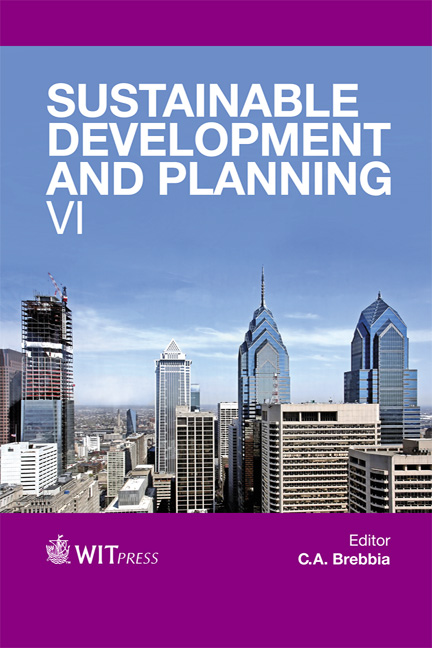Enhancing Sustainable Infrastructure With The Aid Of The Green Infrastructure Toolkit
Price
Free (open access)
Transaction
Volume
173
Pages
8
Page Range
467 - 474
Published
2013
Size
374 kb
Paper DOI
10.2495/SDP130391
Copyright
WIT Press
Author(s)
S. H. Saroop, D. Allopi
Abstract
It is globally acknowledged that there is a growing need for co ordination of design, sustainability, economic and environmental requirements of infrastructure projects.
The provision of civil infrastructure plays a major role on the natural environment and on the quality of life.
The lack of appropriate tools and skills for sustainable design is often quoted as a barrier to sustainable design Richardson et al. (Design and Sustainability: A Scoping Report for the Sustainable Design Forum, 2005).
A systematic and iterative analysis of the environmental impact of various design solutions is commonly suggested for infrastructure projects, but rarely happens.
In order to stay competitive and to meet upcoming stricter environmental regulations and customer requirements, designers have a key role in designing civil infrastructure so that it is environmentally sustainable. These and other factors have compelled the engineer to design with greater care and in more detail. The changing roles of engineers will be highlighted, in order to react to changes in climate.
In the area of sustainability, there is an urgent need to apply technologies and methods that deliver better and more sustainable performance in a way that is cost effective.
Sustainability, adaptive and mitigative approaches to climate change, in the design of infrastructure are therefore important steering elements (FIDIC, State of the World Infrastructure Report 2009). This paper discusses the application of ‘green technology’ on infrastructure design projects. It gives an overview of the proposed Green Township Infrastructure Design Toolkit and looks at a number of recommended green practices on infrastructure services design, that are environmentally sound, placing fewer burdens on the environment.
The use of the proposed model would ensure a sustainable design of township infrastructure services through the consideration of scare resources and ecological sensitivity in the design and planning of infrastructure projects.
Keywords
green technology, infrastructure design, eco-efficiency, sustainable development, green infrastructure





